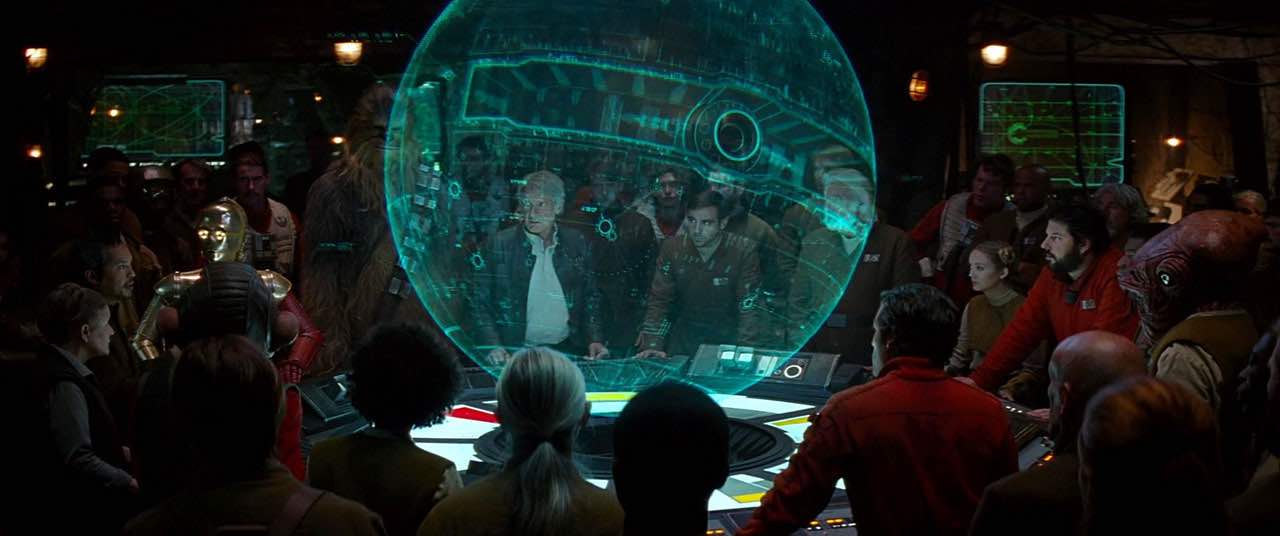New Features in Adobe Premiere Pro CC Summer 2016
Adobe Creative Cloud’s next update was just announced at NAB 2016 with a plethora of new features and improvements across all of the apps. In this post I’m going to give you a quick and not so quick run down of what’s new and interesting in Adobe Premiere Pro, Media Encoder, Audition and After Effects. As this is Adobe’s ‘sneak-peak’ there will probably be more in the release but these are just the highlights.
Before you leave this post make sure you check out Andrew Kramer’s presentation on creating the holograms in Star Wars: The Force Awakens.
If you don’t have time for a longer look then the three minute video above and these short headlines will give you a decent grasp of what’s coming in the next release, due out ‘early summer 2016’.
Premiere Pro Highlights – Better media management and new proxy workflows on ingest. Improved lumetri controls, HSL secondaries, scopes and Tangent Element panel support. VR editing workflow functionality (external stitching required)
Media Encoder Highlights – Media browser now included. Ingest presets. Export from Audition. Publish to Twitter.
After Effects Highlights – Better playback. Smoother interface interactions. GPU accelerated effects. Cinema 4D exporter.
Audition Highlights – New essential sound panel delivers handy presets for common tasks. Versatile new export options to Media Encoder.
If you have a lot more time than three minutes (80 minutes in fact) then chief Adobe product evangelist Jason Levine walks through the new features in Premiere Pro, After Effects and Audition, all on trendy Twitch TV.
He also answers a bunch of viewer questions as he goes along and goes into more detail than Al, but he has more time. So for example, he covers the new White Balance eye-dropper in the Lumetri panel.
What’s new in Adobe Premiere Pro?
If you have 25 minutes to spare then Al Mooney’s Supermeet presentation takes you through a good overview of what’s new in Premiere Pro CC and how that new functionality will work. One thing that’s great about Al’s presentation is how many times he mentions that the new features are in direct response to user-feedback.
Another smart decision by Adobe is the fact that, when it comes to the proxy workflow, by default the core functionality remains the same. This means Premiere simply continues to reference the stored media, nothing new is created and so nothing unexpected will happen when you update.
In these bite size videos you can get a feature by feature understanding of what’s coming, which are essentially the same things that Al covered more humorously in his presentation above.
The new grading features coming to the Lumetri panel. The ability to perform decent secondaries quickly, is very welcome!
How to edit VR files in Premiere Pro. You will need to stitch these files before bringing them in. But Premiere supports the equirectangular frame, where-ever it comes from. It will be interesting to see if VR out lasts the feature development.
Updates in Media Encoder
There’s not a huge amount of new features added to Media Encoder, but the addition of the Media Browser does make it seem like it will become more useful. Personally I just use Media Encoder to export stuff out in the background while I’m editing and make multiple deliverables at once with a few handy presets.
Updates in Adobe Audition
The new Essential Sound panel in Adobe Audition seems like a great step forward for most editors who might never have ever even opened the app before. Preset effects and filters will help you get work done inside of Audition – maybe even for the first time, pretty quickly. Although now, like with the phasing out of Speedgrade and introduction of Lumetri, it would just be handy to have that right inside of Premiere.
Each of these simple controls are actually adjusting many parameters under the hood, controlling Audition’s famous native DSP and effects for outstanding results. And audio experts can pick up a project and continue using the native effects, as if they built the project from scratch themselves.
This short video demonstrates how to export your audio mix into Media Encoder with a set of versatile export options.
If you’ve never really investigated Adobe Audition then this 20 minute presentation from Filmmaker Mark Edward Lewis, will help you get into and out of the app as an editor rather than a sound designer. It’s a great introduction to the app and a simple sound mix workflow.
Improvements to After Effects
After Effects sees some under the hood improvements, which are actually the kind of updates that you really need to make life happier from day to day, rather than shiny new features.
After Effects ships with a lite version of Cinema 4D and the new export to MAXON Cinema 4D helps you send After Effects compositions to Cinema 4D for editing. If you import the C4D file, via Cineware, you’ll get live updates in After Effects based on changes made in C4D.
Creating Star Wars: The Force Awakens Holograms in After Effects
I’m a huge fan of Andrew Kramer, Video Copilot.net, his feature film work and all that he has contributed to the post production global community. In this session from the Adobe booth at NAB 2016, Andrew talks through how he and his team created the holograms for JJ Abram’s Star Wars: The Force Awakens.
Also if you’ve not seen it before, then Andrew’s keynote speech at AE World in 2015 was fantastic – funny, inspiring, moving and educational. Check out this post I wrote over on Premiumbeat.com for 5 Takeaways from Andrew’s presentation.
In this short video from Adobe you can pick up some great advice from Andrew on producing great creative work…
One thing that I’ve learned is that hard work is usually the reason behind every great thing. And when you understand that, you’re not going to be thinking – “What’s a quick way to do this?”… And you start focusing on – “Hey this is something I love and I want to give it attention, and I want to put hard work into it.”








It’s look awesome when andrew talks through how he and his team created the holograms for JJ Abram’s Star Wars: The Force Awakens really looks fantastic. It is real hologram or just effect of adobe premiere?
Hi Madison,
Not 100% sure I follow your question. Andrew created all the effects in After Effects, as he details in the video?